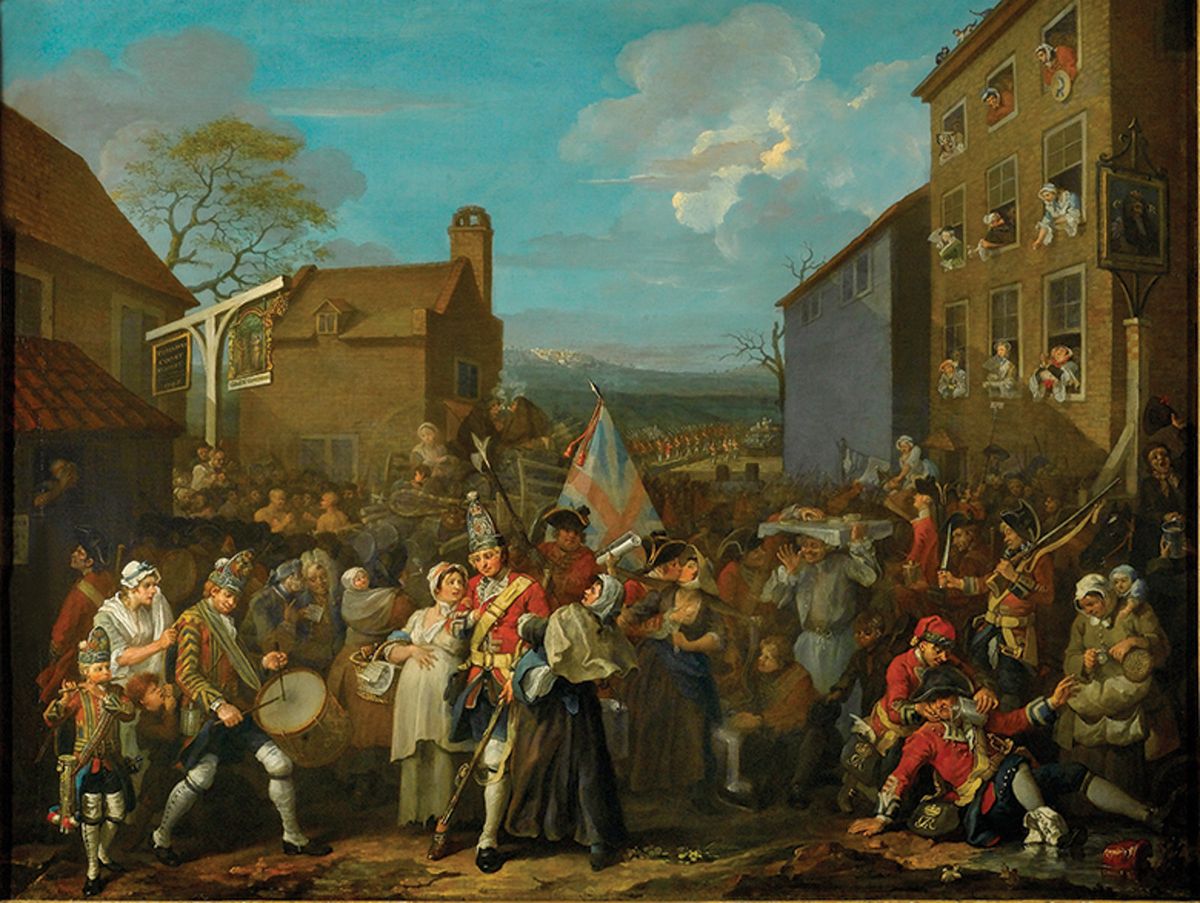In the past 15 years or so, the British painter, engraver, storyteller and satirist William Hogarth has been the subject of new scholarly approaches that have, independently and collectively, challenged the dominance of the “John Bull” nationalist cliché under which the artist’s reputation has long laboured. Similarly, recent exhibitions have aimed to present the artist as more nuanced, contradictory—and more fun—than the cliché allows. The last full survey was Tate Britain’s blockbuster in 2007. Now the gallery is presenting a smaller but more focused show on the theme Hogarth and Europe, where more than 60 of the artist’s works will sit alongside those of contemporaries from Paris, Venice and Amsterdam.
The National Gallery in London has been displaying Hogarth among his European contemporaries and ancestors for decades; his Marriage A-la-Mode series (around 1743) was part of the gallery’s founding collection in 1824. The trouble is, as the exhibition’s curators observe, despite the depth and breadth of recent scholarship and the many exhibitions, in the popular psyche the John Bull cliché persists. Simply put, Hogarth is the victim of his own success, or at least the success of his most overtly xenophobic compositions, such as the Francophobic and anti-Catholic The Gate of Calais (1748)—created in the wake of the French-supported 1745 Jacobite Rebellion, part of the War of the Austrian Succession—which quickly defined, or consigned him to, the status of high priest of British (or English) gloating exceptionalism.
Given this and the post-Brexit times we live in, this latest Hogarth exhibition feels like a radical, even to some heretical, proposition. But the truth, as this show will hopefully reiterate, is that Hogarth was a self-consciously European as well as British artist. Indeed, he was a London artist, and as international, as well as national and local, as that great city is and always has been. Marriage A-la-Mode (as the title neatly declares) is both a parody and a homage to French art and fashions, but the real joke is on the giddy followers of such “taste”, the English aristocracy. The curators aim to make such connections and influences directly and emphatically. Let’s hope they finally hit home.
Looking beyond Britain, the exhibition and the accompanying publication draw on a wide pool of expertise, bringing additional layers of context and meaning heightened by recent events—for example, Hogarth’s representations of people of colour. The star of the show will be the portrait of Hogarth’s patron, Miss Mary Edwards, resplendent in rich red silk and diamonds, lent for the first time in 100 years by the Frick Collection in New York (which is currently closed for a major refurbishment). It was Mary who commissioned Hogarth’s Taste in High Life of 1742, soon after known as “Taste a-la-Mode”—and the rest is history.
• Hogarth and Europe, Tate Britain, London, 3 November-20 March 2022


